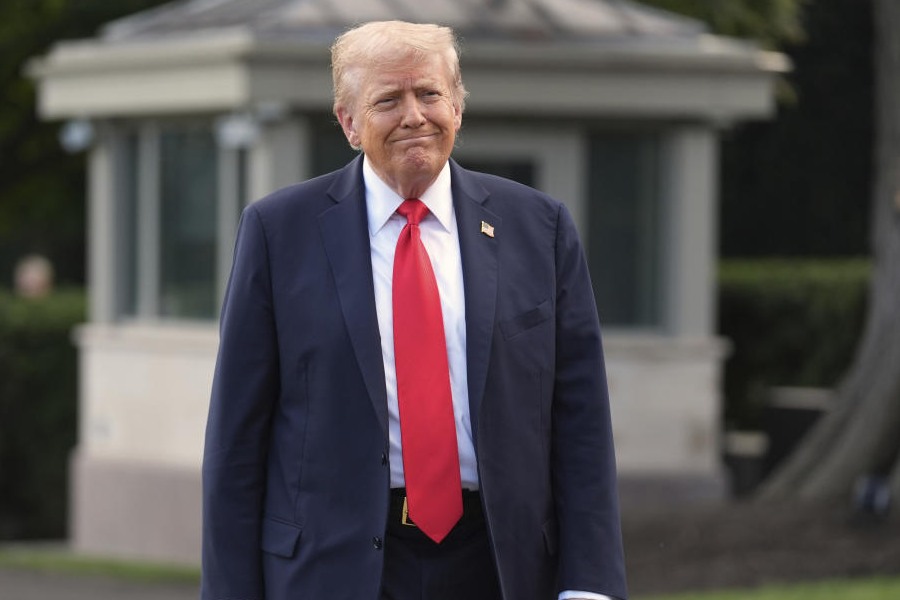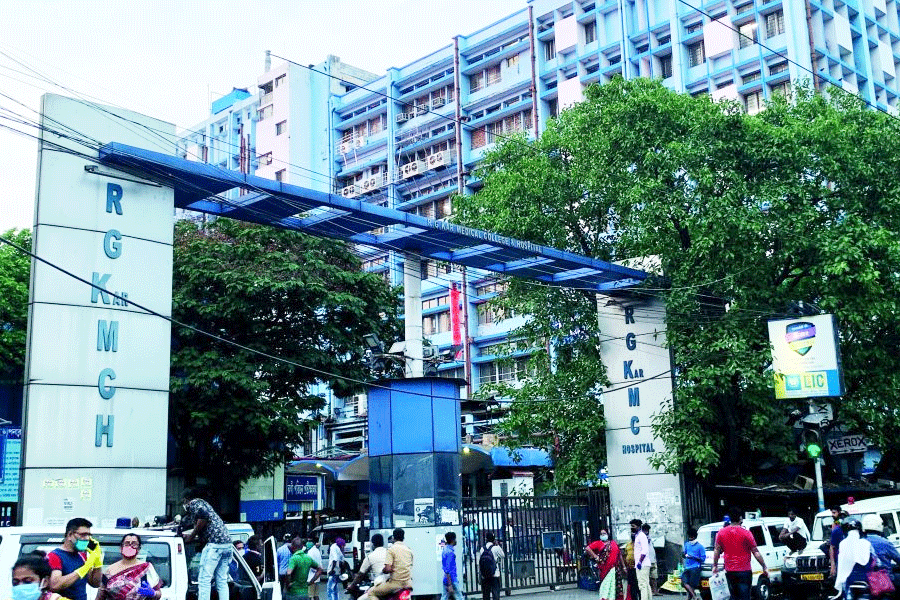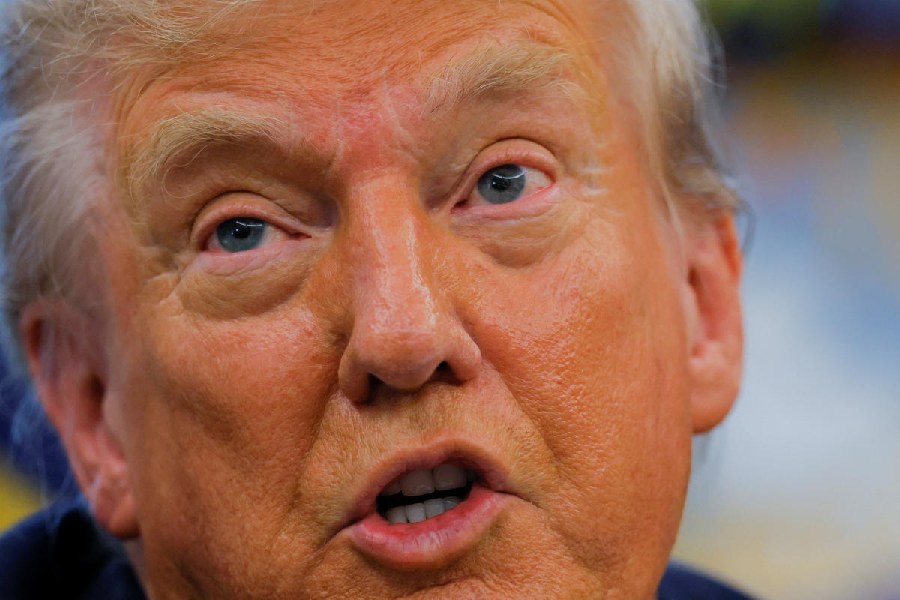 |
| A scene from Raja Ki Poshak Ki Swang |
Theatre productions from remote regions of the country, performed by villagers, aren?t easy to come by in this city. So the National Folk Theatre Festival (Eastern Zonal Cultural Centre, February 20-26) organised by the Union ministry of culture was an occasion to look forward to. Seven plays, representing seven of the country?s best-known folk theatre forms, should have been a culturally enriching experience. It wasn?t.
While each performance, without exception, showcased the basic ingredients which have made this genre traditionally the most popular source of entertainment in villages ? song and dance, compelling plot, dazzling costume, humour and wit ? most of them failed to go beyond all that in the way theatre is expected to go.
Rishi Mukhopadhyay came close with Bhadreswarir Galpo, based on a folk legend from Panchakot, near Bishnupur, but in spite of a moving tale which unfolded in the backdrop of a spectacular set, splashed with all the earthy hues of the Bankura-Purulia border of West Bengal, in the end it left no lingering images in the mind. The Manipuri Shumang Leela, or court drama, Restaphen, seemed to have perfected the folk tradition of dres-sing up male actors as females (so perfect was the guise that a fascinated crowd gathered outside the green room after the play to verify), but little else.
In what can only be explain-ed as an attempt to appeal to the rural masses ? who by now have been fed on a steady diet of mainstream Hindi cinema ? Pukar, the Nautanki from Kanpur, injected generous doses of the bawdy variety of dance movements, known as the ?jhatka?, into an otherwise traditional milieu.
While folk theatre evolved by constantly adapting, introducing contemporary themes to mythological narratives, there is a thin line between adapting and mutating. The festival plays, unwittingly, brought to notice the danger of the latter happening.
Charming exceptions were the Punjabi Naqqal, which offered superbly executed Kathak and khayal, and Raja Ki Poshak Ki Swang, which lived upto the Bundelkhand Swang comedy tradition, with the actors moving throughout the duration of the play in the comic rhythm typical to this form. It inspired some tongue-in-cheek moments in spite of the mildly irritating exaggerated buffoonery of the two actors playing the king and the jester.











